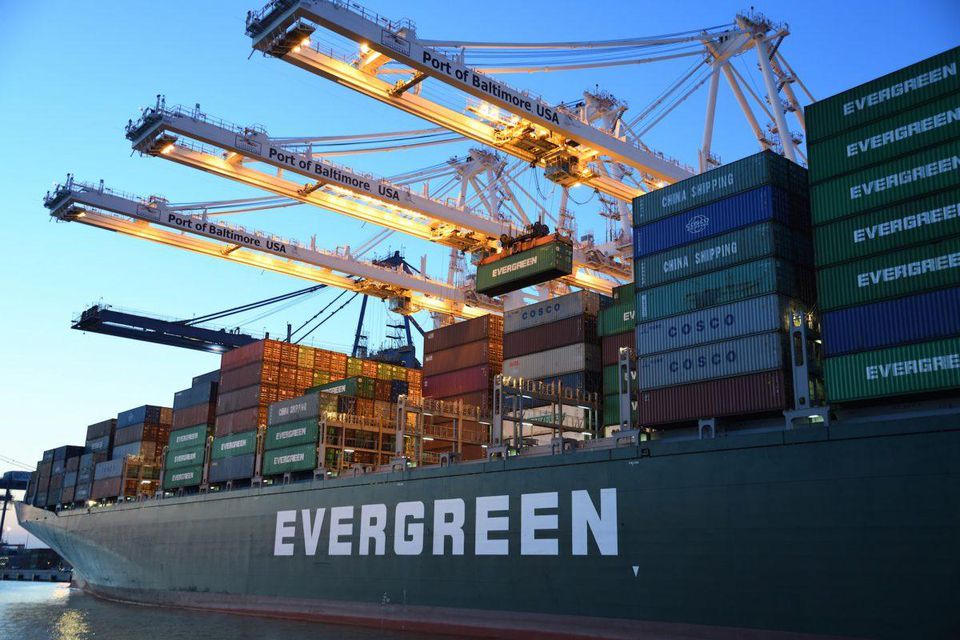
As the logistics industry, and the broader business world, looks to 2019, it’s time to explore what the next year will bring to logistics.
As the president of a logistics company, I’ve outlined four predictions that I believe the logistics industry will experience over the next year.
1. The Truck Driver Shortage Will Expand With No End In Sight
Over the past year, the U.S. has experienced a shortage in truckers as a result of exploding demand and an aging workforce. As of now, it appears unlikely that this truck driver shortage will end soon.
World Bank data shows that U.S. import and export traffic nearly doubled between 2000 and 2016. During that time period, twenty-foot equivalent unit (TEU) traffic increased from 28.3 million TEUs in 2000 to over 50 million TEUs in 2016. Despite a huge rise in demand for truckers to transport these imports and exports, the number of qualified drivers is not growing.
The No. 1 reason for the shortage in qualified drivers is demographics. According to the Bureau of Labor Statistics (via NPR), the average age of a trucker in the U.S. is 55. These truckers want to retire and exit the workforce within 20 years. Without drastic change, such as the widespread deployment of driverless trucks, this shortage will grow.
Driverless trucks probably won’t be here for a few years, mostly due to legal concerns. The good news is once this transition happens, driverless trucks will reduce trucking costs and minimize demand-related trucking shortages.
2. Big Data And Blockchain Technology Will Revolutionize Logistics
According to a 2017 Census Bureau report, there are around 408,000 small and midsize U.S. importers and exporters trading internationally. Ninety-eight percent of exporters and 97% of importers are small or midsize. Despite these statistics, larger companies account for around two-thirds of all trade, while small and midsize companies are responsible for just one-third.
Demand for information technology (IT) services in the logistics industry appears to have increased in recent years as more companies begin to deploy IT resources in their logistics/supply chain operations. That trend will likely continue in 2019 as small and midsize importers and exporters even the playing field against larger counterparts by leveraging big data and blockchain technology.
The implementation of big data will lead to safer supply chains globally. Small to midsize importers and exporters stand to gain the most from new technology since they do not have the resources to create a safe supply chain but will be able to rely on freight companies that provide big data capabilities to customers. The supply chain will be safer, as importers and exporters will have the ability to communicate quickly with global suppliers and automate tasks to minimize human error and eliminate paper.
In 2019, many small to midsize importers and exporters that are working with freight companies will choose to use big data when shipping goods globally. With the touch of a button, they will approve shipment specifications, see their cargo be loaded/unloaded, view the condition of their cargo, read the temperature inside a container, and track important milestones like customs clearance, arrival dates and delivery receipts. The mass adoption of big data will be a game-changer in logistics.
Blockchain technology will increase transparency for importers and exporters in 2019. It will replace needing extra time and personnel to record transactions within the supply chain. When shipping globally, there are many parties involved, so it will benefit shippers to minimize information disruption, reduce paperwork needed, and maintain access to original information without worrying about tampering during and after shipment. Additionally, blockchain will eliminate intermediaries, as it enables direct communication between participants.
3. Payments Will Be Safer, And Cross-Border Transactions Will Be Easier
In 2019, new payment technology will reach the logistics industry on a widespread scale, leading to secure transactions globally.
The global trend of the last decade toward widespread credit and debit card use, as well as the introduction of cryptocurrency as an alternative form of payment, will accelerate in logistics. In 2019, most shippers will choose to pay for the shipment of goods with major credit or debit cards, as freight companies and other intermediaries are pressured to offer this payment convenience. This will help everyone, as small to midsize importers and exporters will have payment flexibility, while freight companies can get paid faster.
Globally, the introduction of cryptocurrencies such as bitcoin will become widely accepted, leading to safer payments with an eye toward maintaining customer privacy. Whether a major financial institution introduces its own cryptocurrency remains to be seen, but logistics will be ready. For the logistics industry, cryptocurrency will make it easier for cross-border, international payments to be done safely and privately.
4. The Logistics Industry Will Continue To Consolidate, Leaving Few Major Players
Between 2016 and 2018, major developments in logistics led to the consolidation of major shipping companies. The result is fewer shipping carrier options for shippers.
In 2019, this consolidation will continue, with major players in the shipping industry already numbering less than 10. It has become difficult to survive as an independent shipper with a fleet of cargo ships. To compete, shipping companies have joined forces to form shipping alliances.
Today, the top three shipping alliances are 2M, Ocean Alliance and THE Alliance. Together, they are composed of 11 shipping lines, including most major shipping players. In 2019, more alliances may be formed, shipping lines may move to start new alliances or two alliances may merge.
By the end of 2019, further consolidation may mean higher rates due to less competition. However, through consolidation, shipping companies will offer top-tier customer service and increased capacity. In 2019, consolidation will continue to be a double-edged sword.
No matter what happens in 2019, it’s clear that change is coming to logistics. Importers and exporters must be ready, or they will be caught off guard.
Source: Forbes



